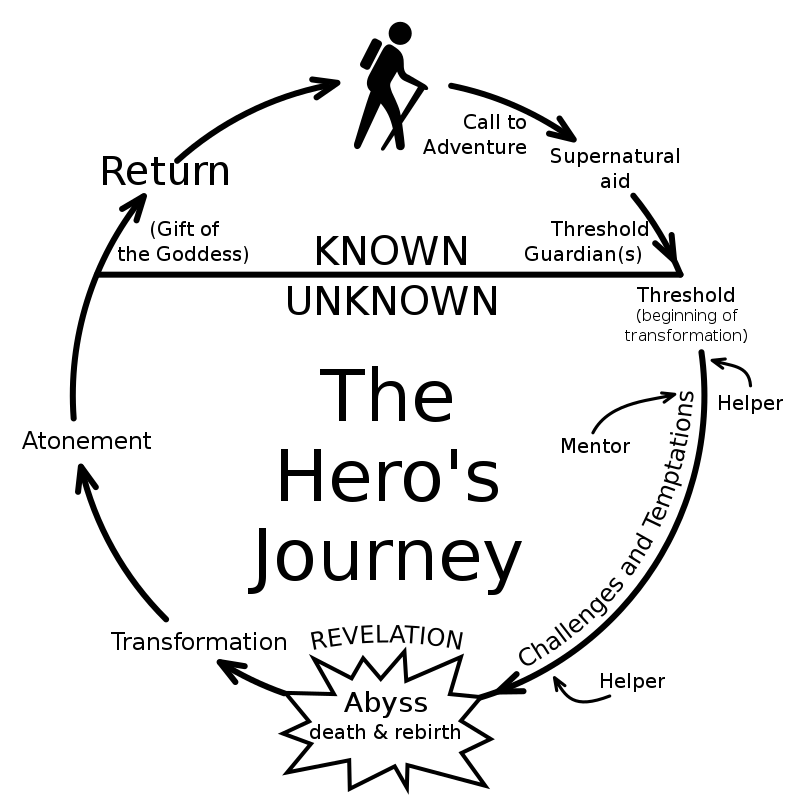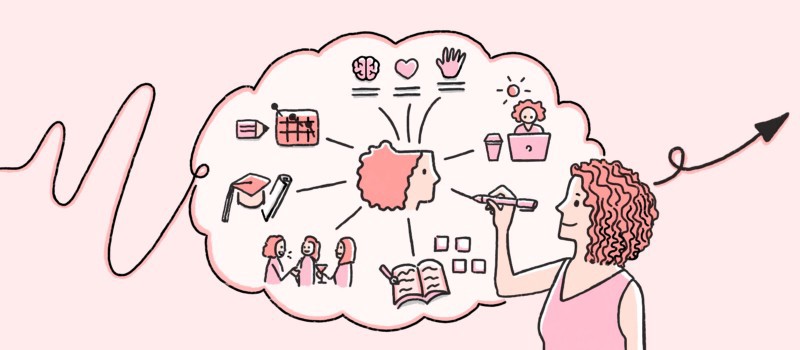The popular saying “good design is invisible” probably applies to your favorite app, website, and even physical product. But what if it also applies to the world of storytelling?
Picture your top 5 movies or books. Now think about the stories told. Each story is complex, nuanced, and unique in its own right. But most of these stories are designed. Each follows a pattern, a carefully constructed, frame-by-frame storyline that fits a meticulously curated mold. This is why you cried at some point while watching Pixar’s UP or why your adrenaline pumps when watching Star Wars.
Our study group at f1studioz discussed one such aspect of the structure of a story — the hero’s journey — which sparked broader ideas about the role of storytelling in designing a better user experience and how storytelling has paved the way for “design fiction” and designing for the future.
The Hero’s Journey
Joseph Campbell, a student of Carl Jung, first introduced the Hero’s Journey in his work “The Hero’s with a Thousand Faces.” He posits that each story follows a “basic formula” which is what makes a captivating story the viewer emotionally invests in.
And much like good design, good storytelling transcends the spoken word. Each person has a strong picture of who the hero or mentor is and expects that character to follow certain traits. Thanks to the Hero’s Journey, classic tales like Aesop’s Fables have been passed on from generation to generation and been translated into various languages.
The Relevance of Storytelling
Why must designers be effective storytellers? Because storytelling lies at the core of the design. Think about why you’re designing and who you’re designing for. Having empathy to step into your users’ shoes is critical, and to have empathy you need to have an imagination. Really imagine your users’ motivations, frustrations, and reasons for using what you’re designing. For example, if you’re designing an app to help teenagers with school work, you have to come up with a story. Perhaps they’re going to a highly competitive school and have high levels of stress. If you’re able to paint a clear picture of your user, you’ll make better design decisions. Remember the 5 W’s: Who, what, when, where, and why. Perhaps you’ll include a section where kids can de-stress by playing games. Or maybe a forum or channel where they can anonymously ask for support. But if you think of these kids merely as your “users” — no backstories, no goals, or frustrations — you’ll come up with something that may be flawless from an engineering or design perspective, but not as useful as.
Furthermore, having a clear story and a “lead character” will ensure engineers, designers and researchers are all on the same page and promote seamless workflows across cross-functional teams. Stronger stories mean stronger teams, better communication, and better collaboration.
Storyboarding is a valuable tool in the research process because of these very reasons. All of that nebulous data from consumer insights finally has a face and name to it, simplifying big ideas into more concrete terms and even revealing insights that would otherwise not been revealed.
On the other hand, the relationship between storytelling and branding has been a tumultuous one. Brands have tried to sell people more things through creating likable characters, like the infamous Ronald McDonald, or mascots with complex backstories that make them feel all the more real. We live in a world where attention is the most valuable commodity (the “attention economy”) so who can really blame these brands? And so the relationship between narrative and capitalism continues to be complex…
Design Fiction and Storytelling
I first heard of design fiction a few months ago when I attended a workshop about the future of design. In the workshop, we were asked to choose an organization or project and use the hero’s journey to come up with innovative solutions and ways we could take our project forward. The first stage was “the Ordinary World”, where we had to think about what made our organization unique, what paradigms we relied on, and what our strengths and weaknesses were. Then, we were given a ludicrous scenario (such as aliens taking over the world) which served as our “call for adventure.” We then had to explain how that happened and what similar situations it reminded us of that could take place in the real world. We had to brainstorm ways in which this scenario affected our organization, both directly and indirectly, and how we could solve these challenges. Finally, we got to the “reward” stage where we thought about what we’ve achieved without proposed solution and what it’s side-effects were. We returned to the real world with our “elixir” — these magical “future proof” solutions that inspired us to change things now and what conditions needed to be modified to ensure that such change could take place. It was through this workshop that I learned how storytelling and the hero’s journey are truly relevant to design today.

Try it out for yourself! Think about where you’ve used storytelling and how you can continue to use it to strengthen your own design skills. I guarantee that you’ll end up with an out-of-the-box solution that will change your design game.









